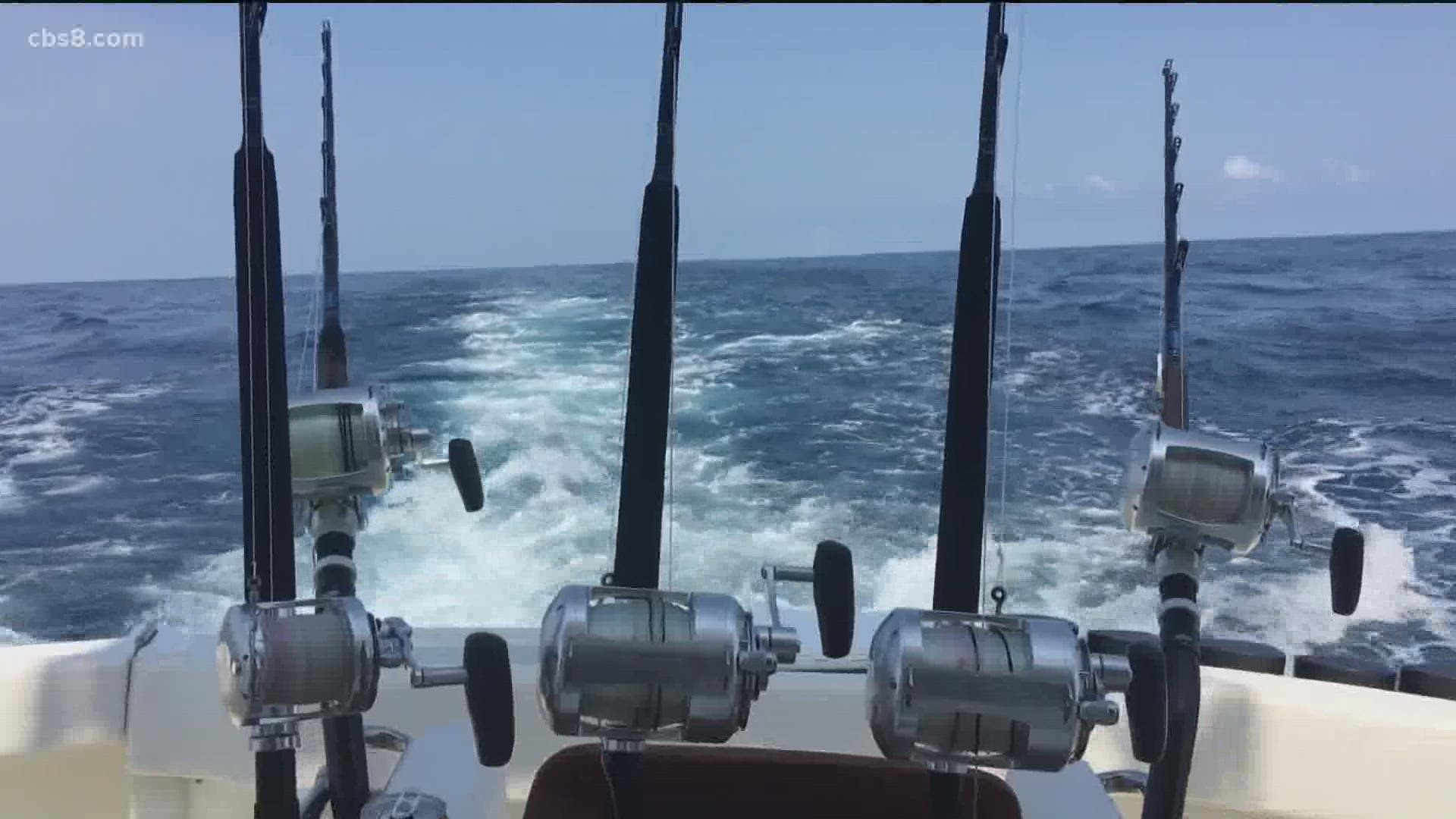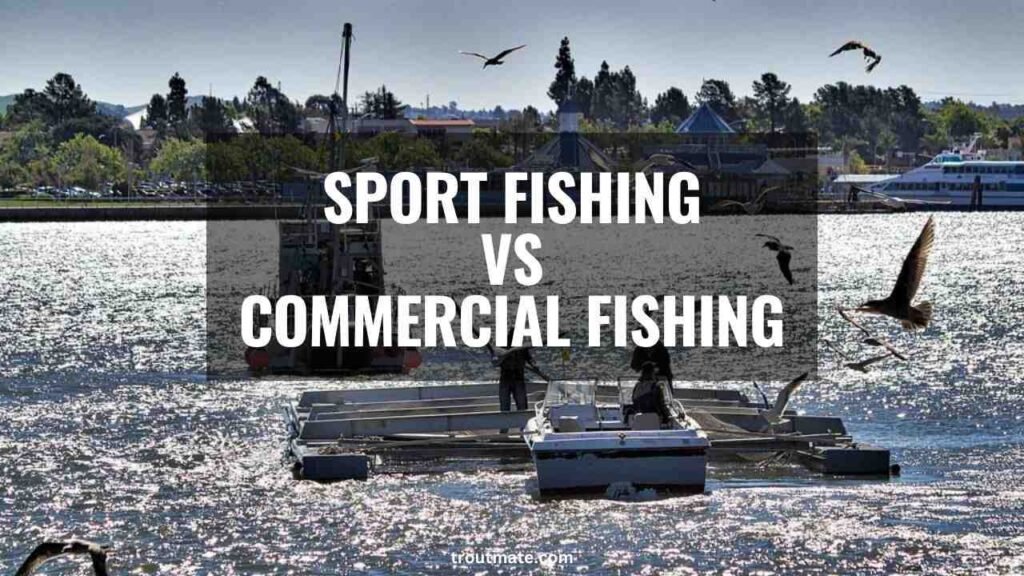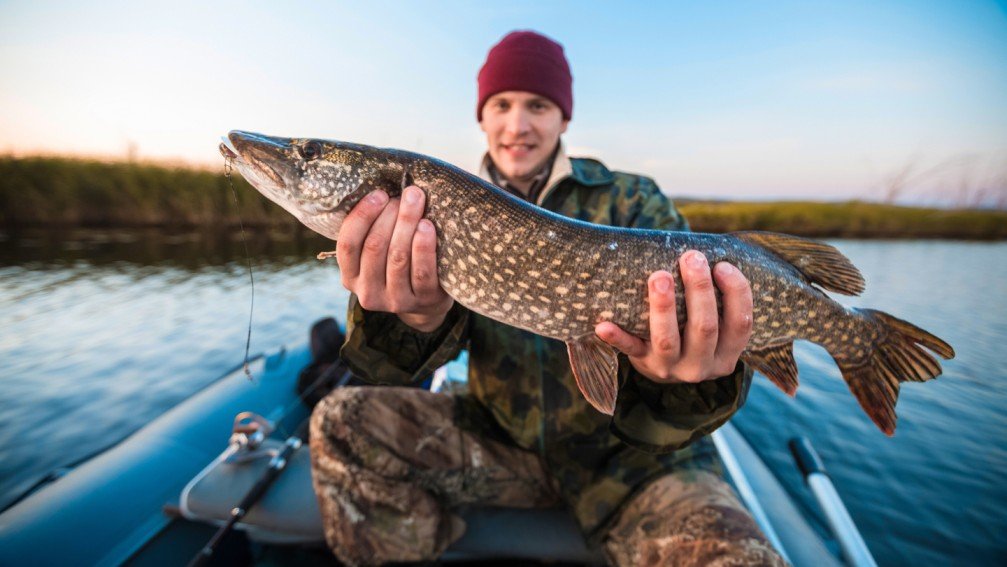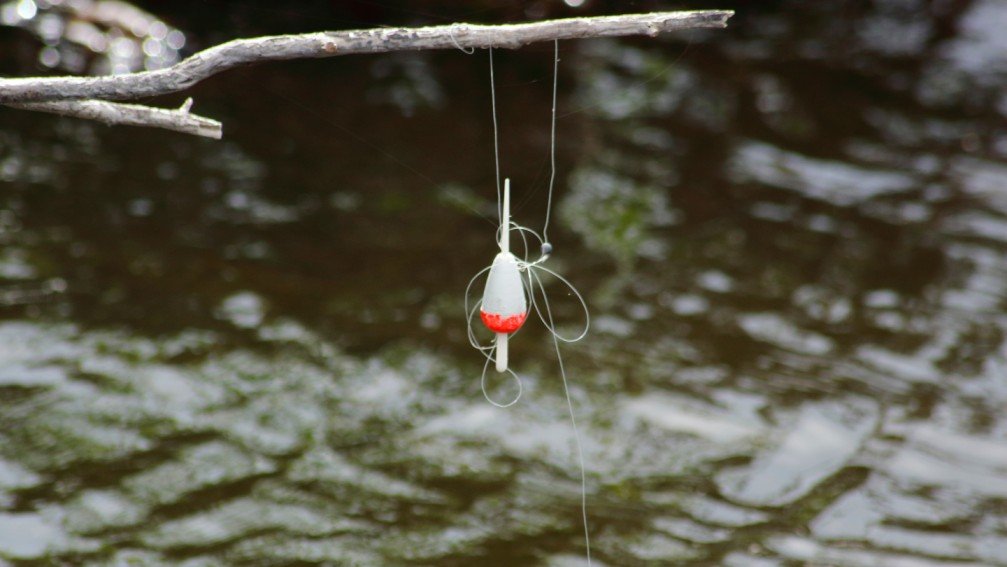Fishing is a popular activity in California. Two main types are sport fishing and commercial fishing.
Sport fishing is a hobby for many, offering relaxation and adventure. Commercial fishing, on the other hand, is a business. It supplies seafood to stores and restaurants. Understanding the differences between these types is important. It helps you decide which suits your interests or needs.
Sport fishing focuses on catching fish for fun. Commercial fishing aims to catch large quantities for profit. Each has its own rules, benefits, and challenges. This comparison will help you understand both better. Let’s dive into the details of sport fishing and commercial fishing in California.
Regulations
Fishing in California involves numerous regulations to protect marine life. Both sport and commercial fishing have specific rules to ensure sustainability. Let’s dive into the details of these regulations.
Licensing Requirements
In California, licensing requirements differ for sport fishing and commercial fishing. Sport fishers need a California Sport Fishing License. This license can be purchased for a day, a year, or even for life. Residents and non-residents have different fees.
| Type | Resident | Non-Resident |
|---|---|---|
| 1-Day License | $17.02 | $17.02 |
| Annual License | $52.66 | $142.05 |
Commercial fishers, on the other hand, must obtain a Commercial Fishing License. Additionally, they need permits for specific species and gear types. These licenses are more complex and expensive due to the scale of operations.
Seasonal Restrictions
California enforces seasonal restrictions to protect fish populations during breeding seasons. Sport fishing seasons vary by species. For example, the salmon season usually runs from April to October, while the rockfish season has more specific dates based on location.
- Salmon Season: April – October
- Rockfish Season: Varies by region
Commercial fishing seasons are also tightly regulated. Specific dates are set to avoid overfishing and ensure species regeneration. For example, the Dungeness crab season typically starts in November and ends in June.
Both sport and commercial fishers must adhere to these seasonal restrictions to avoid penalties. Violating these regulations can lead to hefty fines and suspension of fishing privileges.

Credit: www.cbs8.com
Techniques
Fishing in California is a popular activity. Both sport fishing and commercial fishing have their unique techniques. These techniques vary based on the goals and regulations. Let’s explore the differences in detail.
Fishing Gear
Sport Fishing: Enthusiasts use lightweight and portable gear. This includes fishing rods, reels, and tackle boxes. Anglers often prefer high-quality, durable gear for a better experience. The choice of gear depends on the target species and fishing location.
Commercial Fishing: Professionals use heavy-duty equipment designed for large catches. This includes trawl nets, longlines, and pot traps. Commercial vessels are equipped with advanced technology. This includes sonar and GPS to locate fish schools. The gear is built to withstand tough marine conditions.
Methods Used
Sport Fishing: Anglers use various methods to catch fish. Common techniques include casting, trolling, and fly fishing. These methods require skill and patience. Anglers often practice catch-and-release to conserve fish populations. They aim to enjoy the sport and protect the environment.
Commercial Fishing: Commercial fishermen use methods designed for efficiency. These include trawling, longlining, and purse seining. Each method targets specific species in large quantities. The goal is to maximize the catch while minimizing effort. Regulations ensure sustainable practices and protect marine life.
| Aspect | Sport Fishing | Commercial Fishing |
|---|---|---|
| Gear | Lightweight rods and reels | Heavy-duty nets and traps |
| Technology | Basic gear | Advanced sonar and GPS |
| Methods | Casting, trolling, fly fishing | Trawling, longlining, purse seining |
| Purpose | Recreation and sport | Large-scale harvest |
Environmental Impact
California’s fishing industry has a significant impact on the environment. Both sport fishing and commercial fishing have their own set of environmental effects. This section explores the sustainability practices and ecosystem effects of these two types of fishing.
Sustainability Practices
Sport fishing in California follows strict regulations to ensure sustainability. Anglers often use catch-and-release methods to minimize fish mortality. They also adhere to bag limits, which control the number of fish they can catch in a day. These practices help maintain fish populations and ensure that fishing remains a viable activity for future generations.
Commercial fishing, on the other hand, has more complex sustainability practices. The industry uses quotas to control the amount of fish caught. Bycatch reduction devices are employed to minimize the capture of non-target species. Commercial fishers also have seasonal closures to protect fish during their breeding periods. These measures aim to balance economic benefits with environmental protection.
Ecosystem Effects
Sport fishing has a relatively low impact on ecosystems. The use of artificial lures and barbless hooks reduces harm to fish. Anglers also avoid sensitive habitats, such as spawning grounds, to protect fish populations. This approach helps maintain the health of aquatic ecosystems.
Commercial fishing can have more significant ecosystem effects. Trawling, a common commercial fishing method, can damage sea floors and habitats. Overfishing is another concern, as it can deplete fish populations and disrupt food chains. To mitigate these effects, commercial fishers use more selective gear and implement marine protected areas.
Below is a comparison of the environmental impact of sport fishing and commercial fishing:
| Aspect | Sport Fishing | Commercial Fishing |
|---|---|---|
| Catch Methods | Rod and reel, catch-and-release | Quotas, bycatch reduction devices |
| Regulations | Bag limits, seasonal closures | Quotas, seasonal closures |
| Impact on Habitats | Low | Varies (can be high with trawling) |
| Bycatch | Minimal | Varies (can be high) |
Catch Limits
Catch limits play a vital role in both sport fishing and commercial fishing in California. These regulations ensure sustainable fishing practices and prevent overfishing. They help maintain fish populations and protect the marine ecosystem. Let’s explore the daily quotas and size restrictions in both fishing types.
Daily Quotas
Daily quotas are set by California’s Department of Fish and Wildlife. They dictate the number of fish an angler can catch each day. These limits differ for sport fishing and commercial fishing.
Sport Fishing: Anglers have strict daily quotas. For example, they can catch only five rockfish per day. These limits help maintain fish populations for future generations.
Commercial Fishing: Commercial fishers also have quotas but they are higher. Their quotas depend on the type of fish and current regulations. For instance, the daily limit for commercial rockfish is often higher than for sport fishing.
Size Restrictions
Size restrictions are another important aspect of catch limits. They ensure that only mature fish are caught, allowing younger fish to grow and reproduce.
Sport Fishing: Anglers must adhere to size limits. For example, a halibut must be at least 22 inches long. These rules help protect juvenile fish and ensure healthy fish populations.
Commercial Fishing: Size restrictions also apply to commercial fishers. They must follow similar rules to sport fishers. For instance, commercial halibut must meet the same size requirement. This ensures that all fishing practices support sustainable fish populations.
| Fishing Type | Daily Quotas | Size Restrictions |
|---|---|---|
| Sport Fishing | Lower daily quotas (e.g., 5 rockfish) | Strict size limits (e.g., 22-inch halibut) |
| Commercial Fishing | Higher daily quotas | Similar size restrictions as sport fishing |
Economic Differences
Sport fishing and commercial fishing in California have different economic impacts. These differences affect revenue generation and job creation. Understanding these aspects helps in appreciating their roles in the economy.
Revenue Generation
Sport fishing generates revenue through tourism and recreational activities. Anglers spend on equipment, boat rentals, and licenses. This spending supports local businesses and boosts the economy.
Commercial fishing, on the other hand, focuses on selling fish to markets. It generates revenue by supplying seafood to restaurants and grocery stores. The income is significant and supports the fishing industry infrastructure.
| Sport Fishing | Commercial Fishing |
|---|---|
| Tourism-related spending | Seafood sales |
| Equipment and licenses | Market supply chain |
Job Creation
Sport fishing creates jobs in various sectors. These include tourism, hospitality, and retail. Tour guides, boat operators, and shop owners benefit from this industry.
Commercial fishing provides employment in fishing operations. This includes fishermen, processing plant workers, and distribution personnel. It also supports related industries like shipbuilding and maintenance.
- Tour guides
- Boat operators
- Shop owners
Both types of fishing contribute to California’s economy. Each plays a distinct role in job creation and revenue generation.
Cultural Significance
Sport fishing and commercial fishing both hold significant cultural importance in California. Each activity offers unique experiences and benefits to the community. Understanding their cultural significance helps us appreciate how these practices shape local traditions and lifestyles.
Recreational Value
Sport fishing is a popular pastime for many Californians. It provides a way to relax and connect with nature. People enjoy the thrill of catching a big fish. It creates lasting memories with family and friends. Recreational fishing is a great way to spend weekends and holidays.
Families and individuals bond over shared experiences. They learn about marine life and conservation. The activity encourages outdoor adventures and healthy living. Sport fishing events and competitions further enhance its value. They bring together enthusiasts from all walks of life.
Community Involvement
The local community plays a vital role in both sport and commercial fishing. In sport fishing, clubs and groups organize various activities. They host fishing tournaments and educational workshops. These events foster a sense of belonging and unity.
In commercial fishing, the community’s involvement is even more significant. Many families depend on fishing for their livelihood. They work together to ensure sustainable practices. Local businesses thrive by providing services and products related to fishing. The industry supports countless jobs and contributes to the economy.
Both types of fishing activities enrich the cultural fabric of California. They promote traditions, foster community spirit, and support local economies.
Challenges
Fishing in California presents unique challenges for both sport and commercial fishers. While the thrill of the catch drives many enthusiasts, the impact on the environment and adherence to regulations are crucial factors that affect both groups. Let’s explore the key challenges faced by sport and commercial fishers in California.
Environmental Concerns
Environmental issues are a major challenge for both sport and commercial fishing. Overfishing is a significant problem. It depletes fish stocks and harms marine ecosystems.
- Sport Fishers: Catch and release practices help, but not all fish survive. The use of hooks and nets can cause physical harm.
- Commercial Fishers: Bycatch is a serious issue. Non-target species are often caught and discarded, leading to waste and ecosystem disruption.
Both groups must be aware of and work to minimize their environmental impact. Sustainable fishing practices are essential for the health of California’s marine life.
Regulatory Compliance
Adhering to regulations is another significant challenge. California has strict laws to protect marine environments and fish populations.
| Type | Regulations |
|---|---|
| Sport Fishing |
|
| Commercial Fishing |
|
Both sport and commercial fishers must stay informed and comply with these regulations. Failure to do so can result in penalties and harm to the environment.

Credit: wildlife.ca.gov
Future Trends
The landscape of fishing in California is changing. Sport fishing and commercial fishing face new challenges and opportunities. This section explores future trends shaping these industries. Discover how technology and policies are playing a crucial role.
Technological Advances
Technological advances are transforming both sport and commercial fishing. Innovations in fish-finding equipment and GPS systems are enhancing accuracy. Fishermen now use drones for better surveillance of fishing areas. These devices provide real-time data and help in making informed decisions.
Smartphone apps are becoming popular among sport fishermen. Apps provide weather updates, fishing conditions, and even track catches. For commercial fishermen, automated systems are streamlining operations. Robots are now used for sorting and processing fish, reducing manual labor.
Below is a comparison of technological tools used in sport and commercial fishing:
| Type of Fishing | Technological Tool | Benefit |
|---|---|---|
| Sport Fishing | Fish-Finding Equipment | Improved Accuracy |
| Sport Fishing | Smartphone Apps | Real-Time Updates |
| Commercial Fishing | Drones | Better Surveillance |
| Commercial Fishing | Robots | Reduced Manual Labor |
Policy Changes
Policy changes are crucial for the future of fishing in California. Regulations are tightening to ensure sustainability. Quotas are being set to limit overfishing and protect marine ecosystems. These measures aim to balance the interests of sport and commercial fishermen.
New policies also focus on preserving fish habitats. Marine protected areas are being established. These zones restrict fishing activities to allow fish populations to recover. This benefits both recreational and commercial sectors in the long run.
Here are some key policy changes impacting the fishing industry:
- Introduction of fishing quotas to prevent overfishing
- Establishment of marine protected areas
- Implementation of stricter licensing requirements
- Promotion of sustainable fishing practices
These changes are necessary for a balanced and thriving fishing industry in California.
Sport fishing and commercial fishing in California offer unique experiences. Each has its own benefits and challenges. Sport fishing connects you with nature and provides relaxation. Commercial fishing supports the economy and provides jobs. Both are vital to California’s culture and economy.
Choose the one that fits your goals and lifestyle. Enjoy the waters and respect the marine ecosystem. Always follow local regulations and fish responsibly. Happy fishing!
FAQs:
What Is Sport Fishing?
Sport fishing is fishing for recreation or competition. It often involves catch and release.
What Is Commercial Fishing?
Commercial fishing is catching fish for sale. It supplies seafood to markets and restaurants.
Are Sport Fishing And Commercial Fishing Regulated Differently?
Yes, they follow different regulations. Sport fishing has stricter rules on catch limits and seasons.
Do Sport Fishers Need A License In California?
Yes, sport fishers need a fishing license. It’s mandatory for all anglers over 16.
What Species Are Targeted In Sport Fishing?
Sport fishers target species like bass, trout, and salmon. They seek challenging and exciting catches.
What Species Are Targeted In Commercial Fishing?
Commercial fishers target species like tuna, cod, and shrimp. They focus on high-demand seafood.
How Does Sport Fishing Impact The Environment?
Sport fishing has less impact on fish populations. Catch and release practices help conservation.
How Does Commercial Fishing Impact The Environment?
Commercial fishing can lead to overfishing. It can deplete fish stocks and harm marine ecosystems.
Can You Eat Fish Caught In Sport Fishing?
Yes, you can eat fish caught in sport fishing. Follow local guidelines for safe consumption.
How Does The Economy Benefit From Commercial Fishing?
Commercial fishing supports jobs. It contributes to the economy through seafood sales and exports.



